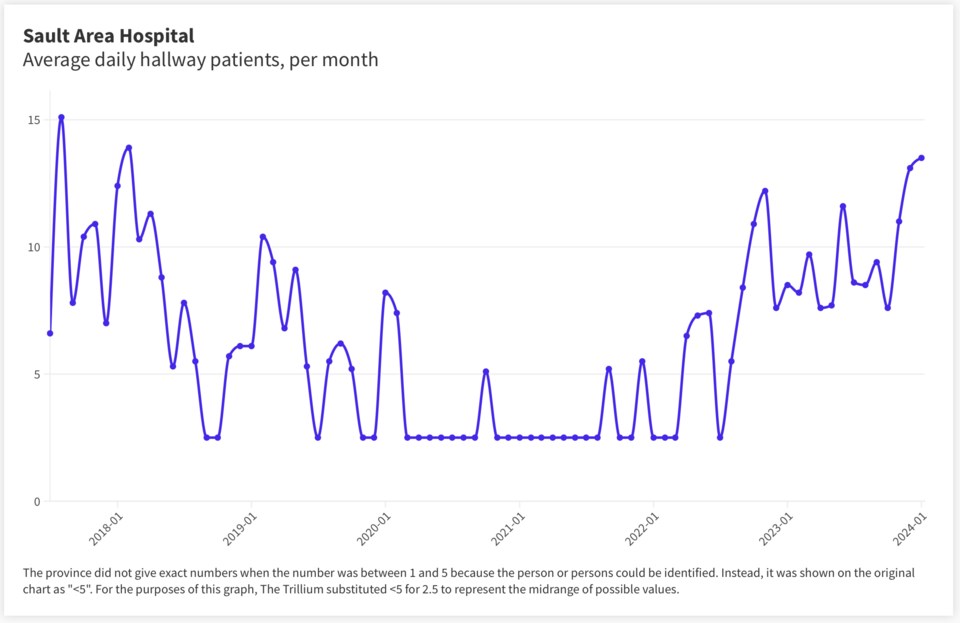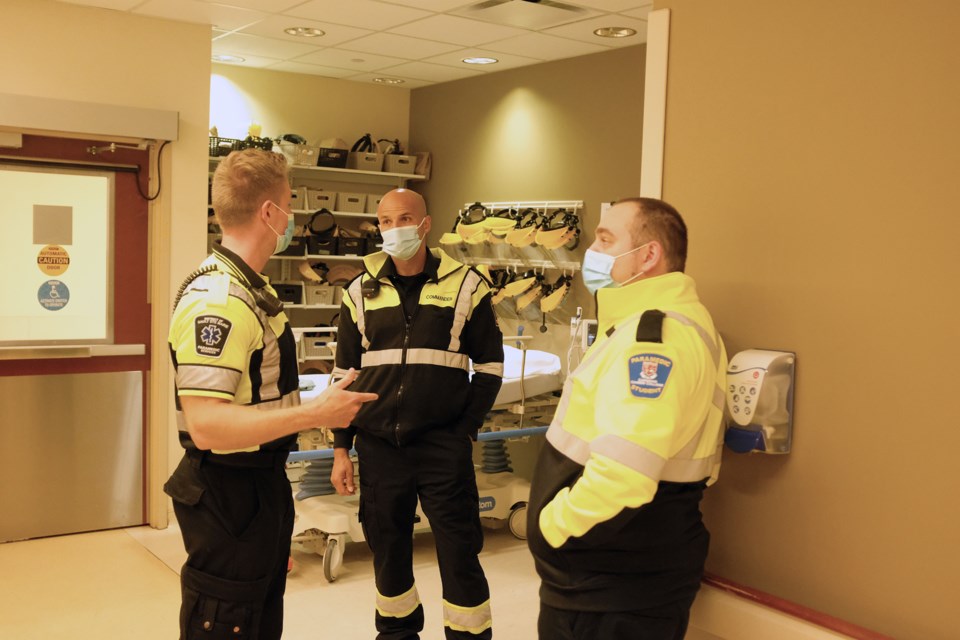When the Ontario PC party was appealing to voters in 2017 to oust the Liberals from power, it campaigned heavily on eliminating the hallway health care that was occurring in hospitals across the province at the time.
Years later, the recorded instances of patients kept in the hallways of Sault Area Hospital is inching ever closer to those 2017 numbers.
As Village Media's The Trillium reported today, data shows nearly 2,000 patients on average were kept in "unconventional spaces" like hallways and break rooms in hospitals across the province in January — the highest number ever recorded.
Through a Freedom of Information request, The Trillium acquired statistics from Ontario Health about the average number of daily patients treated each month in hospitals across the province.
In the case of Sault Area Hospital (SAH), the statistics show an average of 15 daily hallway patients per month in August of 2017, less than one year before premier Doug Ford and the Ontario PC party took charge of the province.
For years, the number declined at SAH and during the pandemic trended from between zero and five daily hallway patients per month. But since the summer of 2022, that number has been steadily climbing.
In January 2024, seven years after the change in government, that figure has risen to 13.5, the worst result at SAH since February of 2018, while the Liberals were still in power.
Rose Calibani, communications and public affairs officer for SAH, said at first glance the numbers provided to The Trillium by Ontario Health do not match the hospital's own figures, but she was unable to provide local statistics before deadline for this article.
"Our only hallway patients are in the Emergency Department, and do not exist anywhere else in the hospital," said Calibani. "This occurs predominantly for low acuity patients who are waiting to be seen, awaiting follow-up, or are awaiting test results."

Patients requiring urgent treatment are seen in exam spaces, not hallways, said Calibani.
"Once patients are admitted, they are either transferred to an inpatient bed or they are waiting in an exam room in the Emergency Department for an inpatient bed for, the most part," she added.
Calibani said patient volumes in Emergency Departments dropped to 43,940 during the first part of the pandemic in 2020, during the first wave of COVID-19 — which is reflected in the Ontario Health data showing an average of fewer than five hallway patients per month over much of that time.
In 2019, SAH had 54,144 Emergency Department patients. In 2023, a total of 48,515 patients used the Emergency Department.
"Our current patient volumes are not at pre-pandemic levels but are higher than during the pandemic," said Calibani. "The overall patient volume trend since 2017 is lower, however there is higher acuity which is a contributing factor to longer wait times."
In an emailed response to SooToday questions, MP Ross Romano said Ontario is leading the country with some of the shortest wait times in Canada. Romano did not respond to a question asking if he was concerned the numbers from SAH are returning to the levels seen during the Kathleen Wynne premiership.
"Under the leadership of Premier Ford, our government is making the largest investment in health care in the province’s history," said Romano. "Since 2018, our government has increased the healthcare budget by over 31%, investing over $85 billion into the system this year alone."
A $44 million increase this year is targeting Emergency Department wait times, said Romano, and the government is exploring innovative staffing models to allow hospitals to use staff to their full potential.
"Our government is providing a 3.2% increase at Sault Area Hospital to maintain base operations, ensuring Ontarians can continue to connect to high-quality care, closer to home," said Romano. "This funding is part of our government’s investment of an additional $965 million, through the 2024 Budget, to help Ontario’s publicly funded hospitals meet the needs of the communities they serve now, and for years to come."
Romano also notes investments in Algoma Family Services and other partners in Sault Ste. Marie to ensure people can connect to the primary care they need.
In the article by The Trillium, opposition leaders criticized the Tories for not living up to the 2018 campaign promise and attacked the government’s record on the issue.
“I wish I could say I was surprised, but everywhere that I've been, all across this beautiful province, people are worried about our health-care system,” said NDP Leader Marit Stiles.
“It is more than fair to judge this government on their failure to fix hallway health care, and let's be clear, because they ran on fixing it. They said they had a plan,” she said.
— with files by The Trillium
